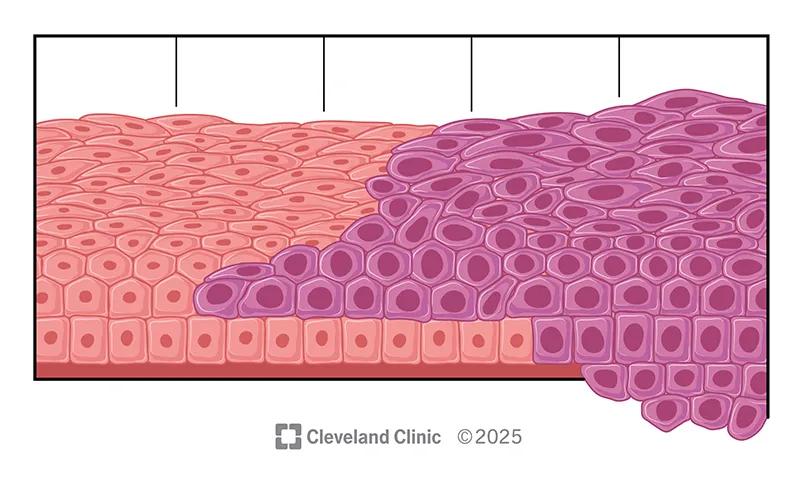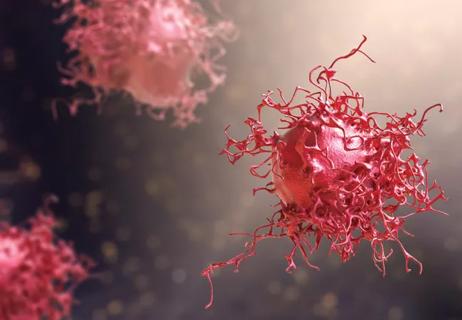Artesunate ointment shows promise as a non-surgical alternative

Midway through separate phase II trials of topical artesunate for two types of gynecologic dysplasia, the medication is being well tolerated, and researchers are hopeful that they may find a new treatment for moderate to severe squamous intraepithelial lesions that can be precursors to cancer.
Advertisement
Cleveland Clinic is a non-profit academic medical center. Advertising on our site helps support our mission. We do not endorse non-Cleveland Clinic products or services. Policy
These dysplasias are associated with human papilloma virus (HPV) infection.
The multi-center research, led by Cleveland Clinic, is evaluating artesunate, an antiviral developed to treat malaria. It has received orphan drug and breakthrough drug designations from the U.S. Food and Drug Administration, says Chad Michener, MD, the Neil and Barbara Lazar Endowed Chair in Gynecologic Oncology Research and Education at Cleveland Clinic. Success of the medication for treatment for HPV-related gynecologic lesions would depend in part on its ability to clear the virus or reduce it to undetectable levels, he adds.
“Typically with most of the high-grade dysplasias, we treat them surgically and it gets rid of the dysplasia, but it doesn't get rid of the virus — certainly not permanently. So individuals can have recurrences many years later,” says Dr. Michener. “One of the points of our research is to look at HPV clearance rates, because HPV is what is causing the dysplasia. When we looked at patients in our phase I study of artesunate for vulvar dysplasia, more than 60% of the people who had complete responses had HPV clearance at least to below the limits of detection. Will it come back over time? That's the question. But clearing the HPV is one of the things we have to make sure we can do.”
The trials now underway are investigating artesunate for usual-type vulvar intraepithelial neoplasia and for cervical dysplasia:
Advertisement
The current treatment options for vulvar dysplasia include laser ablative therapy or vulvectomy. “If we have to cut out the abnormal cells, it’s going to change the anatomy,” says Dr. Michener.
For cervical dysplasia, patients may have either LEEP or a cone biopsy. “That can potentially mean removing a portion of the cervix. If patients have to have repetitive procedures, that can affect future pregnancy outcomes,” says Dr. Michener.
That’s why the goal is to find a topical treatment that would limit the need for surgical excision procedures.
Patients who live near quaternary medical facilities such as Cleveland Clinic can potentially benefit by having access to advanced and experimental treatments.
One of the aims with this research, however, is to extend any benefit to people who live in areas across the globe without easy access to care — especially places where HPV vaccines are not available.
“These medications are stable at room temperature, so they can be utilized in far-reaching areas,” says Dr. Michener. “With some of these precancerous growths, the hope is that people could treat themselves and we could see a reduction in the incidence of vulvar and cervical cancers down the road.”
Yet to be done are artesunate trials for vaginal dysplasia. Many patients who had had hysterectomy for dysplasias or other conditions have recurring abnormal vaginal pap smears. “The cervix is gone, but now they get sort of a field effect with vaginal lesions,” he says. “Right now the only option is either laser ablation or to cut them out. If we show that artesunate is working well for our cervix patients, then our next question will be whether the suppositories can be used to treat vaginal dysplasia.”
Advertisement

Advertisement
Advertisement

Trial examines novel approach for a disease with a high mortality rate

Reassessing antibiotic dosage and type and restoring gut biome could improve survival rates

Two blood tests improve risk in assessment after ovarian ultrasound

Robust research focuses on detection and prevention

Kits for use in healthcare settings can increase uptake

Case highlights range of options for treating malignancies in pregnancy

Studying trends of conization with lymph node evaluation, trachelectomy and radical hysterectomy

Study showed that regimen was well-tolerated in cohort with aggressive carcinoma